
Volume 24(7) September 2019
"Occupational and community-wide exposures to carcinogens are too common and they remain in many building materials and an array of consumer products. SEHN participates in the growing Cancer Free Economy Network. Along with others, we believe the water we drink, the air we breathe, the food we eat, the places we live, work, and go to school, and the products we use every day should not make us sick. Together we are working to make that a reality."
-Ted Schettler
|
Dear Friend of SEHN,
René Dubos, a microbiologist who later in life turned his attention to environmental issues, noted that “each type of civilization has its own pattern of disease.” Everywhere we turn we see evidence of the diseases our particular Western way of life has created. An analysis of the pills advertised on any tv station tells us that we need to worry about COPD, heart attacks, psoriasis, cancer, asthma and erectile dysfunction. These chronic diseases seem to be so ubiquitous that the ads don’t even spell out the acronym of COPD to tell us it stands for Chronic Obstructive Pulmonary Disease. The underlying message is that diseases are primarily the result of individual lifestyle choices and if we just take a pill, we can live long lives.
That message is full of cultural myths and only partially grounded in reality.
The first myth is that an individual, solely through choice, can be healthy. A baby has no control over the air her mother breathes nor the water and food she ingests and yet a baby exposed to toxics in utero has increased risks of several diseases. So too, people are surrounded by decisions made by city planners, corporations and neighbors that have a direct impact on their health. Is a city walkable? Is the school located next to an expressway? Is the neighborhood marked by racism and poverty? Is the drinking water full of lead? None of these situations are under the exclusive control of an individual but they have significant consequences for public health.
The second myth is that the solution is to focus on treatments and cures for these diseases so we look to pharmaceuticals to treat our cardio-vascular disease, type 2 diabetes or asthma.
Public health stands for the proposition that we are in this together and our health is a feedback loop with the natural, built and social environment. It means that the diseases that are peculiar to a particular civilization or culture may be preventable rather than inevitable. We need to turn our gaze and give full attention to the causes and contributory factors of diseases that we can actually prevent.
Protecting public health is one of the central functions of government. Good governance includes guaranteeing clean drinking water and air, preventing egregious corporate behavior (lying about the risks of tobacco or toxic chemicals, for instance), and fostering the conditions for health. Imagine what the health care debate in the U.S. would be like if we actually started with public health and prevention of disease rather than how to pay for treating and curing preventable diseases.
Rene Dubos also said that trends are not destiny. Public health trends are cautionary tales. We ignore them at our peril.
In this issue of the Networker, Ted Schettler unpacks the science and public health measures of preventing cancer. He shows us where there are additional opportunities in public health trends to take precautionary action and act to prevent cancer.
Carolyn Raffensperger
Executive Director
|
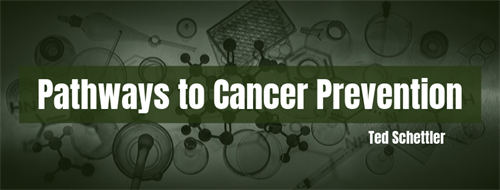
|
Resources allocated to cancer control are overwhelmingly dedicated to early detection and treatment. To be sure, they have resulted in significant improvements in survival and even cures when the outlook was previously grim. But this emphasis has diverted attention from opportunities to prevent many cancers from occurring in the first place, while the cancer burden and costs of treatment in the US and around the world continue to grow .
Cancer prevention lies upstream, toward the beginning of the cancer control continuum . Prevention programs mostly focus on well-established causes primarily under individual control. They emphasize what we can do to reduce our own cancer risk by adopting healthy lifestyles—avoiding tobacco smoking and excessive alcohol, maintaining healthy weight, exercising regularly, eating a healthy diet, and getting preventive medical care. These are important, although only partly effective, and more is needed .
Prevention efforts must also more systematically address cancer hazards in the environments where people live, raise families, work, go to school and play. Many are beyond personal control and their role is often minimized. But years of work by scientists, advocacy groups, and clinicians is paying off with more attention to environmental causes of cancer.
In June, the American Association for Cancer Research (AACR), the world’s largest scientific organization focused on cancer research, sponsored a conference called Environmental Carcinogenesis: Potential Pathway to Prevention . It was the organization’s first program on this topic in its history. The agenda included descriptions of recent findings of genetic “fingerprints” of environmental exposures, updated understanding of how environmental chemicals contribute to cancer risk, the ubiquity of exposures, disproportionately impacted communities, and calls for more prevention-oriented policies and research.
As reported previously in the Networker, in January a number of organizations came together to sponsor a conference on Cancer and the Environment in Pittsburgh. Here, too, speakers and panel discussions emphasized the need to act on what we already know to improve cancer prevention programs.
Also this year the International Agency for Research on Cancer (IARC) updated the Preamble to the IARC Monographs . While monographs systematically assess the carcinogenic potential of specific agents, the preamble describes the objective of the program and methods for scientific review. The revised preamble incorporates new insights into cancer biology as they apply to environmental agents. Scientists increasingly recognize the many ways by which environmental chemicals and contaminants can contribute to cancer risk—alone or in combination with other factors—and the implications for prevention.
Read More
If you are interested in learning more, Ted will be participating in an upcoming webinar on Disrupting Cancer: Systemic Problems, Systemic Solutions hosted by the Collaborative on Health and the Environment. Find out more about this webinar and register here.
|
|
|
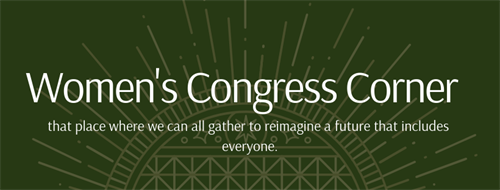
|
|
According to the American Cancer Society, there will be an estimated 1,762,450 new cancer cases diagnosed in 2019.
It's overwhelming to think of that number in terms of actual living, breathing human beings- people we know and love.
Kristina Gaddy is defined by her dedication to authentically telling other peoples' stories and bringing untold history to life through creative nonfiction. Kristina is also a survivor of Leukemia. Her passion and fervor for writing aren't entirely tied to her diagnosis, but her experience as a young person navigating an uncertain world with bravery were. Her own resilience is mirrored in the individuals in all of her stories, but particularly the story of the Edelweiss Pirates, a group of young people involved in the Nazi Resistance. In January 2020, Kristina's first novel, Flowers in the Gutter: The True Story of the Edelweiss Pirates, Teenagers who Resisted the Nazis will be available for purchase from Penguin RandomHouse.
In this conversation, Kristina talks extensively about the history of the Edelweiss Pirates, her journey as a writer, her ongoing works, the ties between climate change and the youth movements throughout history to today, and even shares with us some of her personal journey with Leukemia and how it led her to telling peoples' stories as a career.
Kristina is someone I have known, respected, and loved for quite a few years of my life and I am so thrilled to bring her works to our Women's Congress supporters.
Click here for interview highlights & the full conversation.
Kayhla Cornell
Senior Researcher and Communications Associate
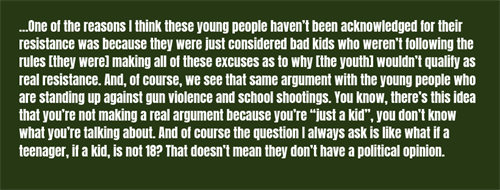
|
 |
|

|
Join us! Committed to reducing all forms of violence, Twin Cities Nonviolent has sparked an idea: invite people and organizations to share their practices for violence prevention and recovery for the 2nd Annual 10 Days Free from Violence, from September 20th to 29th, 2019.
|
|
|
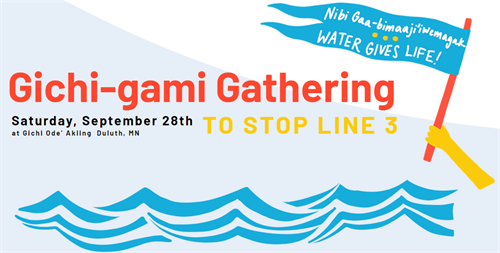
|
Join us September 28 for a rally, march, and gathering to join in community and send a clear message to the Governor, our state agencies, and our elected representatives:
Minnesotans stand together to protect what we love and say STOP Line 3 and other pipelines that threaten our water, climate, and communities.
|
It's no secret that sex trafficking increases when a pipeline is built-- in fact, the increase of sex trafficking was referenced as a risk in the final Environmental Impact Statement filed for Enbridge Line 3.
In order to address these concerns, Enbridge was tasked by the Public Utilities Commission (PUC) with creating and enforcing a plan to prevent sex trafficking in relation to the construction of this pipeline. In this blog post, Healing Minnesota Stories states the prevention plan has yet to be released and, even more concerning, the Minnesota Human Trafficking Task Force was not included in the creation of the prevention plan, which was a requirement of the PUC. READ MORE.
|
|
|
|
|
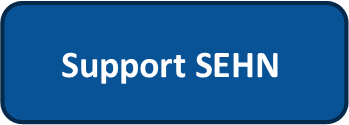
|
|






